Cameras reveal the secret lives of Chernobyl's wildlife
- Published
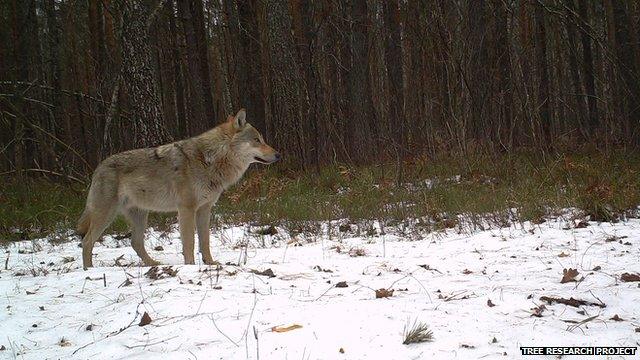
A lone grey wolf takes a moment to survey its surroundings, an image captured by a remote camera in Chernobyl's exclusion zone
Automatic cameras in the Ukrainian side of the Chernobyl Exclusion Zone have provided an insight into the previously unseen secret lives of wildlife that have made the contaminated landscape their home.
Throughout 2015, the cameras will be positioned at 84 locations, allowing a team of scientists to record the type of animals passing through the area and where they make their home.
In the first four months since the cameras were deployed, the team has "trapped" more than 10,000 images of animals, suggesting the 30km zone, established shortly after the April 1986 disaster when a nuclear reactor exploded, ejecting radioactive material across the surrounding terrain and high into the atmosphere, is now home to a rich diversity of wildlife.
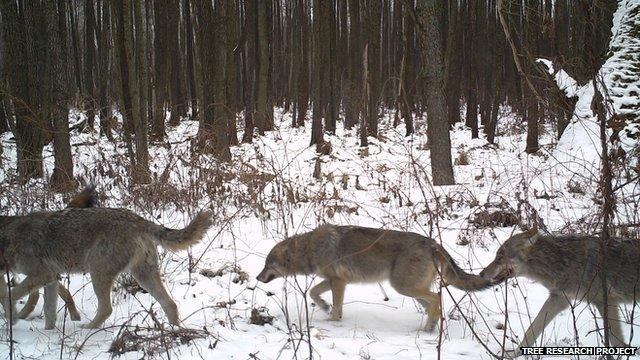
Packs of grey wolves have been recorded across the zone, and seem to have adapted well to life with minimal human interference
The network of cameras is gathering data that will help scientists choose the most appropriate species to fit with collars that will then record the level of radioactive exposure the animal receives as it travels across the zone.
"We want an animal that moves over areas of different contamination - that's the key thing we need," explained project leader Mike Wood from the University of Salford, UK.
"So we would consider some of the larger animals, such as wolves, because they would be ideal because the way the animal moves through the areas actually affects its contamination levels."
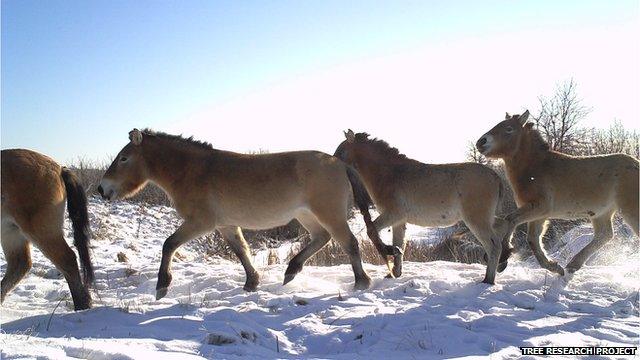
Przeswalski's horses, an endangered species, were deliberately released into the exclusion zone as part of a conservation programme
Commenting on the herds of Przewalski's horses, Dr Wood observed: "They seem to have adapted quite well to life within the zone.
"From the images from our cameras, they are clearly moving around in quite large groups," he told BBC News.
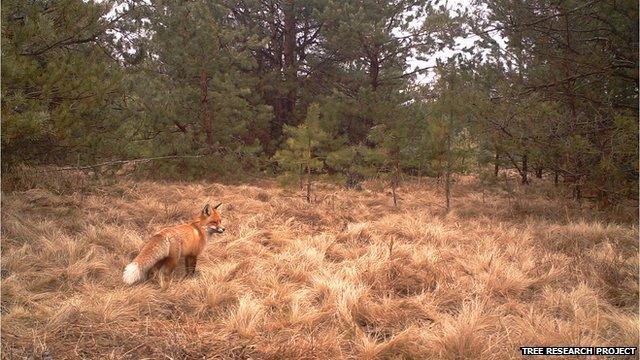
Red foxes are another species that seem to be capitalising on the lack of human disturbance
Dr Wood's team's project is part of a five-year research programme called Transfer, Exposure, Effects (Tree), external, which will aim to "reduce uncertainty in estimating the risk to humans and wildlife associated with exposure to radioactivity, and to reduce unnecessary conservatism in risk calculations".
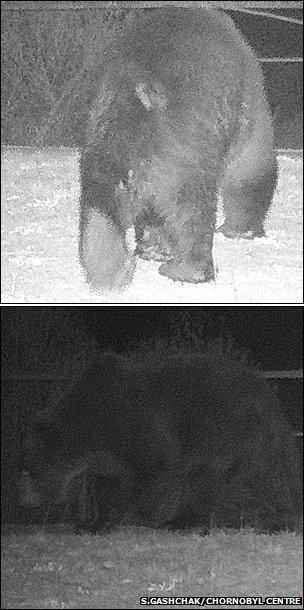
Until these images were captured, there was no known photographic proof that brown bears had returned to the area
Most of the fieldwork will be carried out within the Chernobyl Exclusion Zone (CEZ).
Late last year, one of Dr Wood's Ukranian colleagues - Sergey Gashchak - captured what was believed to be the first photographic evidence of brown bears within the CEZ.
But the tantalising glimpse of the bear is not enough to make it a candidate to fit with a collar.
Fitting collars to smaller animals, such as a fox, has disadvantages - such as limiting the size of the battery pack that can be fitted within the collar. Larger mammals are not without problems either.
"Once you start considering larger animals then it would be necessary to bring in a trained marksman," observed Dr Wood.
"There are difficulties with using firearms in Ukraine and will require additional permits to be put in place."
This means the team currently favours using bait to trap animals in cages, which will allow them to be fitted with the collars and for the individuals to be assessed by a vet before being released.
Illegal poaching is a problem within the CEZ, and one image captured by the cameras suggested that the elk in question had a narrow escape.
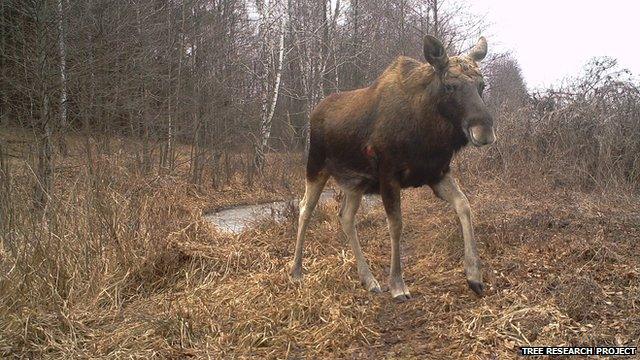
The wound at the top of this elk's foreleg could be a shot injury caused by a poacher's gun
Dr Wood said that the team had to bear in mind the activity of poachers when they chose the most suitable species to wear the collars.
He explained that if the animal was killed then it would mean that the collected data would be limited or lost.
He added: "However, this is a concern that could be applied to any of the species because poachers going into the zone are unlikely to be overly selective."
"This image is a great example of how you could be going through an area and have a lynx just 20 or 30 yards away from you, yet you'd have no idea it was there," said Dr Wood.
"They can literally disappear into the background as they are so well camouflaged in this environment."
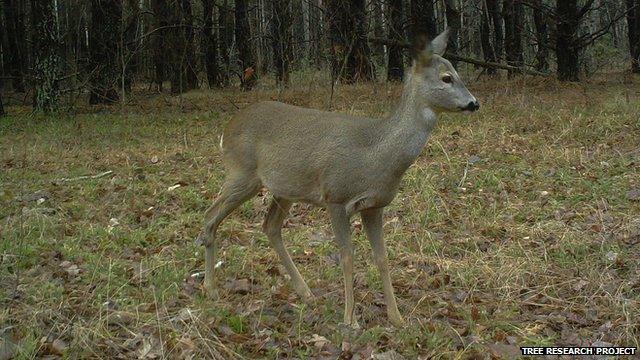
The surrounding habitat provides a perfect backdrop for this roe deer to blend into the background...
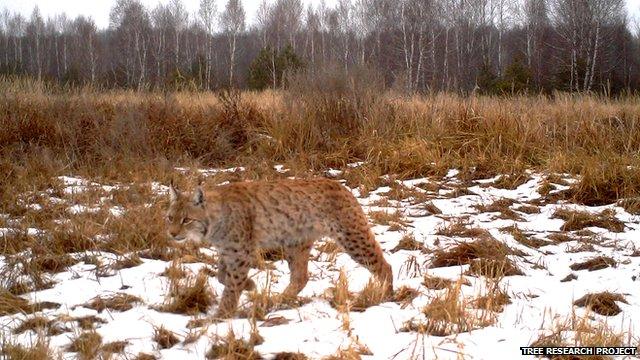
...as it does for this lynx
It also highlights why the camera traps, which will be capturing images until October 2015, are an important tool for the researchers.
They provide a more representative picture of what animals are found in an area, and whether they regularly visit particular locations.
Once the team has collected images from the 84 randomly selected locations across the exclusion zone, the next stage of the project - which is being undertaken by researchers from the University of Salford, the UK's Centre for Ecology and Hydrology, and the Chornobyl Centre - will be to fit tagging collars to the selected species.
This is expected to be carried out during 2016.
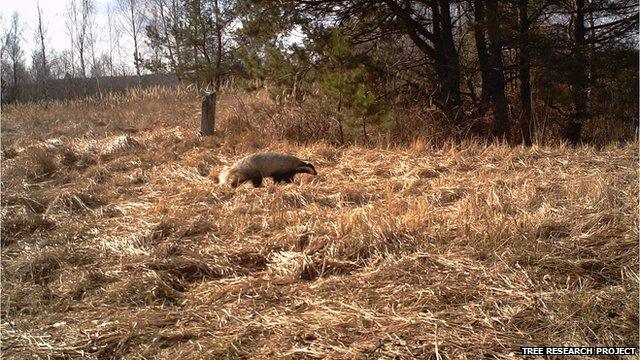
The arrival of warmer weather saw an increase in the number of badgers being photographed by the remote camera traps
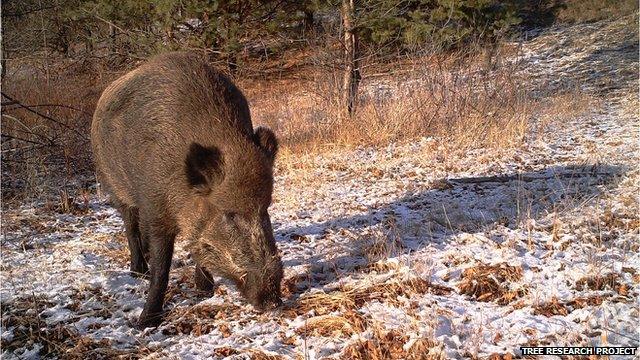
Wild boar are widespread, moving in large groups and causing considerable physical disruption to the top-soils as they forage for food

Although red deer would be a good candidate to be fitted with a collar, it would be logistically difficult to trap the animal
- Published28 November 2014
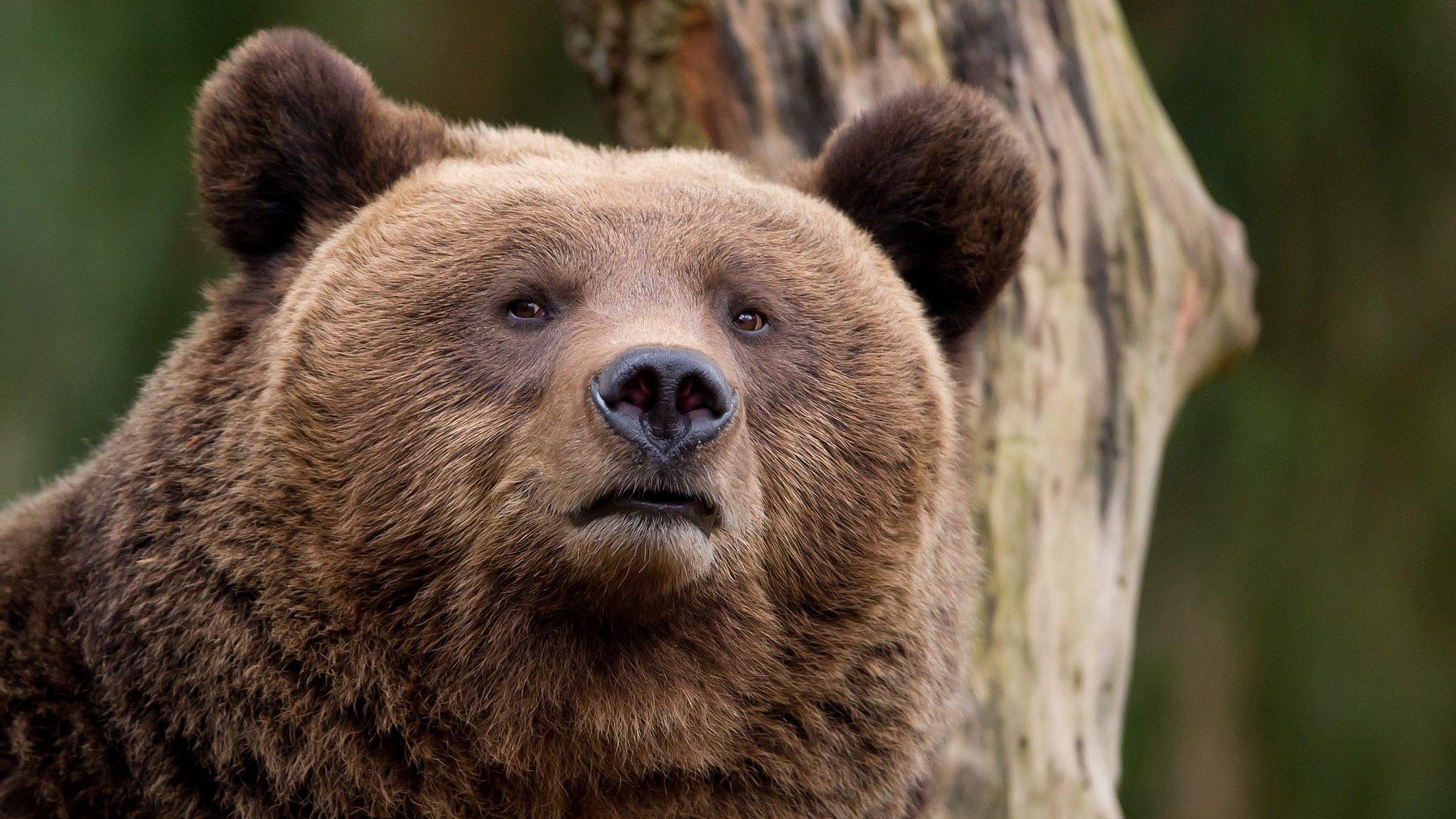
- Published9 August 2013
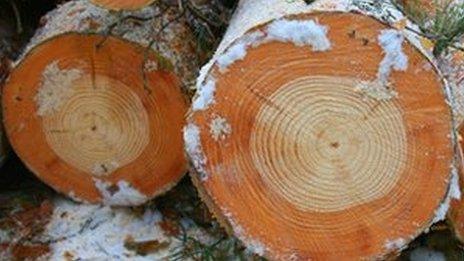
- Published30 July 2010